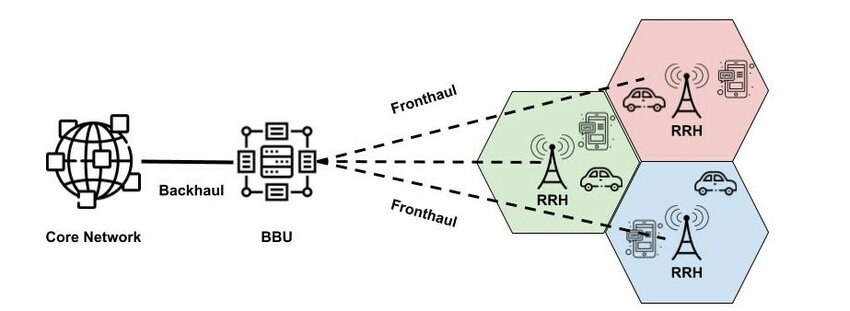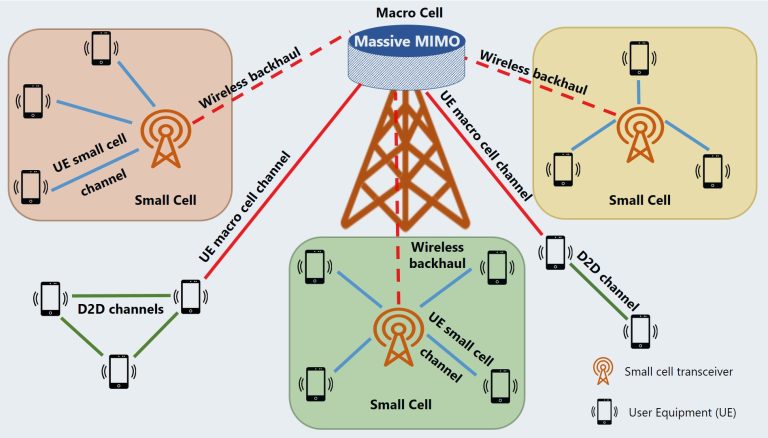Getting Started with Cloud Radio Access Networks (C-RAN) in 5G Systems
telcomatraining.com – As the world continues to shift toward ultra-fast, low-latency mobile communications, Cloud Radio Access Network (C-RAN) technology is becoming a cornerstone of 5G network architecture. C-RAN offers a more centralized, flexible, and efficient solution for handling the massive data demands of modern applications. In this article, we’ll explore what C-RAN is, how it works in 5G systems, and why it’s a game-changer for telecom operators and end-users alike.
What is C-RAN?
Cloud Radio Access Network (C-RAN) is a network architecture designed to improve the performance and efficiency of mobile networks. Unlike traditional RAN (Radio Access Network), where baseband units (BBUs) are co-located with remote radio heads (RRHs) at cell sites, C-RAN centralizes the BBUs in a centralized data center or cloud infrastructure. The RRHs remain at the antenna sites and connect to the centralized BBUs via high-speed fronthaul links, typically using fiber optics.
The Role of C-RAN in 5G Systems
C-RAN plays a critical role in 5G networks by addressing three main challenges: capacity, latency, and energy efficiency.
- Increased Capacity: 5G supports a vast number of devices and high data rates. C-RAN enables network operators to dynamically allocate resources based on real-time demand, ensuring better spectrum utilization and reducing interference between cells.
- Lower Latency: With centralized processing, tasks like Coordinated Multipoint (CoMP) and Massive MIMO can be executed more efficiently. This reduces processing delays and improves end-to-end latency—a key requirement for applications like autonomous vehicles and remote surgery.
- Energy Efficiency: C-RAN helps reduce energy consumption by centralizing computing resources. Baseband processing units in data centers can scale dynamically based on load, resulting in lower operational costs and a smaller carbon footprint.
Key Components of a C-RAN Architecture
To understand how C-RAN functions, it’s essential to grasp its core components:
- Remote Radio Heads (RRHs): These are installed at the cell sites and handle the transmission and reception of radio signals to and from users.
- Baseband Units (BBUs): Centralized in a cloud or data center, BBUs perform signal processing and other complex computing tasks.
- Fronthaul Network: This is the high-speed, low-latency link connecting the RRHs to the centralized BBUs. It’s typically implemented using fiber-optic cables.
- Virtualization and Orchestration Layer: In modern implementations, software-defined networking (SDN) and network function virtualization (NFV) are used to manage and scale network resources efficiently.
Benefits of Deploying C-RAN in 5G
The integration of C-RAN in 5G systems offers numerous advantages for both operators and users:
- Scalability: As demand grows, operators can scale their infrastructure quickly without overhauling physical cell sites.
- Cost Savings: Centralized processing reduces hardware costs and simplifies maintenance.
- Better Quality of Service: Dynamic resource allocation and improved signal processing lead to more reliable connections and higher user satisfaction.
- Future-Proofing: C-RAN provides a flexible platform for integrating future technologies, such as AI-driven network optimization and edge computing.
Challenges and Considerations
While C-RAN brings many benefits, it also presents some challenges:
- High Fronthaul Requirements: The fronthaul network must support high bandwidth and low latency, which can be costly to implement.
- Security Concerns: Centralization increases the risk of cyber threats, making robust security protocols essential.
- Interoperability Issues: Ensuring compatibility between different vendors and legacy systems can be complex.
Conclusion
C-RAN is a transformative technology that aligns perfectly with the goals of 5G networks—enhanced speed, reduced latency, and greater capacity. By centralizing and virtualizing critical components of the mobile network, C-RAN empowers operators to build more agile, scalable, and efficient systems. As 5G adoption accelerates, understanding and implementing C-RAN will be crucial for telecom operators looking to stay competitive and future-ready.







